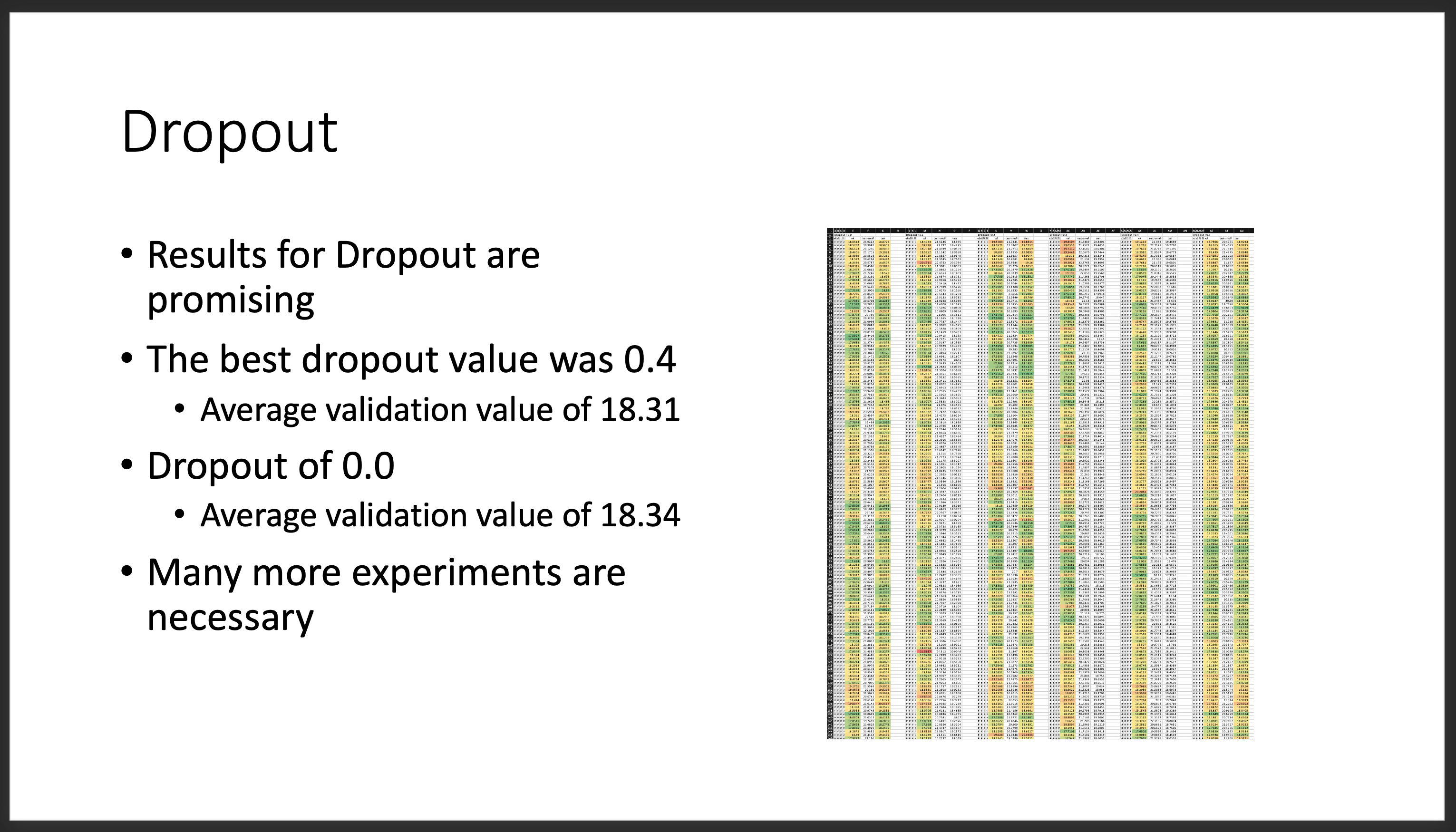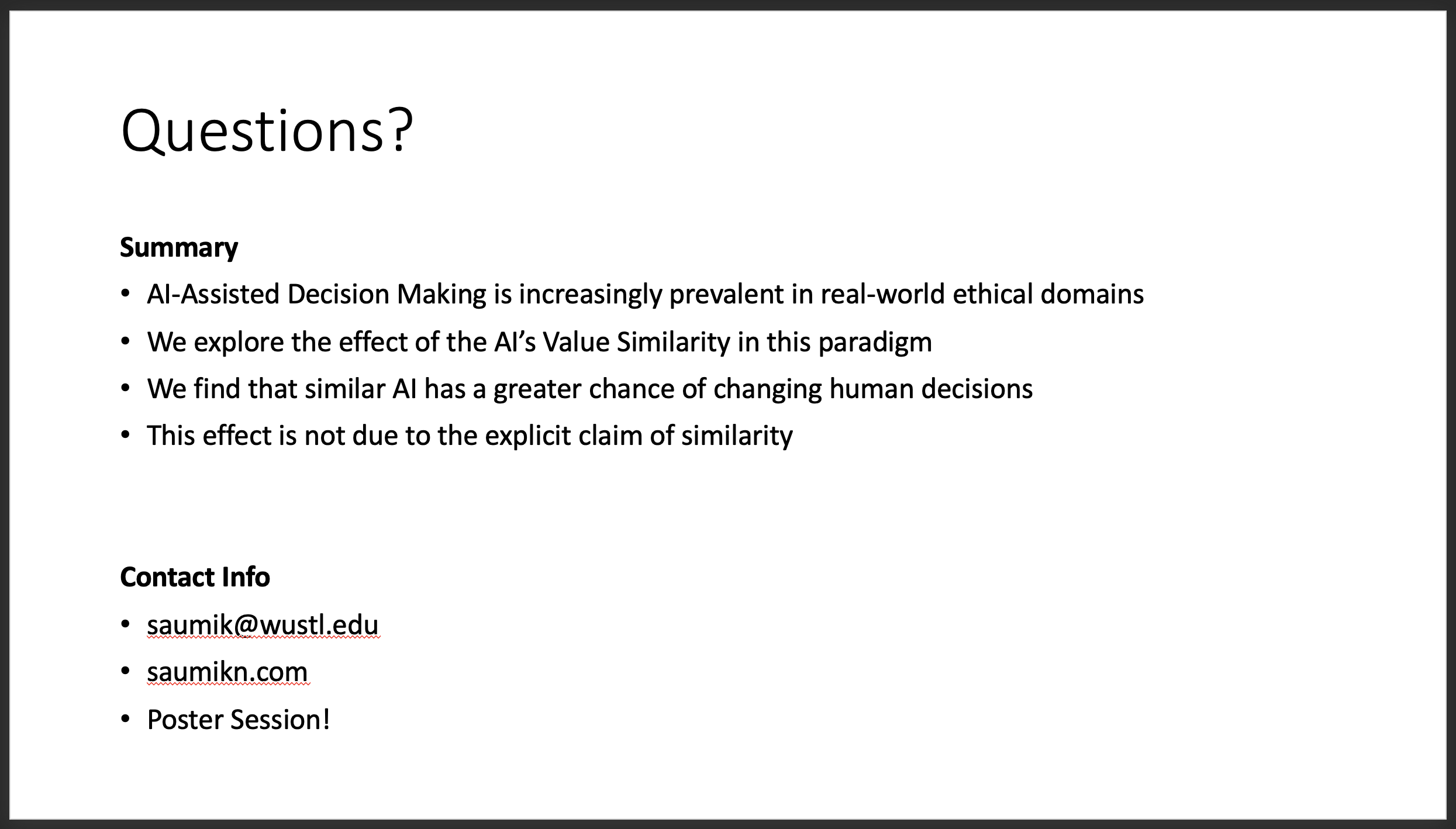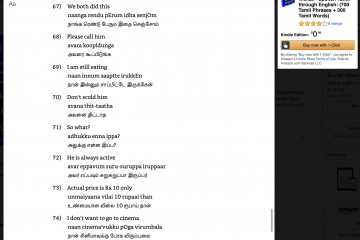I have a lot of experience watching bad presentations, starting right from elementary school, and going all the way through undergrad, in industry, and in my PhD. This is almost certainly true of everybody reading this right now as well, and you might have some specific examples or memories of especially bad talks.
If everybody knows about what bad presentations look like, and hates sitting through them, why do they still happen? The biggest problem is that nobody really teaches you how to present well, so you end up just emulating the bad talks you've seen in the past. Before my PhD, I was no exception to this.
At WashU, we have this program called DSS (Doctoral Student Seminar). Essentially, in order to graduate with a PhD, you need to prove that you're able to give a good talk to a general audience. In our first year, we sit through two of these talks a week, and in our second or third years, we have to pass this ourselves. Listening to these DSS talks, and the public feedback that each judge gives to the speakers was probably the best thing that happened to my speaking ability. Each week, I would take detailed notes during each talk, not on their research, but the mistakes they made while speaking, and what feedback the judges gave.
In addition, I've also watched a lot of videos and guides on how to give better talks. Finally, there's no replacement for personal experience, and I've learned a ton just by actually giving talks to audiences of various sizes and backgrounds.
This blog post is a summary of all the things I've learned about how to give research presentations and academic talks, and I really hope that this is useful to helping others give better talks. Without further ado, here are the 8 tips I think will help you give better research presentations:
1. Start off really, really well
The first 60 seconds of your presentation are by far the most important. These are the precious seconds where your audience will be looking up at you and giving your presentation a chance. You must start off by immediately grabbing their attention, to convince them that the rest of your presentation is worth watching. Otherwise, they will almost certainly spend the rest of your talk looking at their laptop screen.
There are many ways to hook the audience. You can talk about a specific problem that they have in real life. You can tell a joke (about something related to your work). You can tell them a story about something that has happened to you. At AIES last week, I asked my audience the following question and had them physically vote on what they thought was the answer by raising their hands.

No matter what approach you pick, you should focus on standing out from the crowd. If they get nothing else out of your presentation, your goal should be for everybody in the audience to remember your name, remember your face, and come see you at the poster session or a break later.
2. Get excited!
When I'm watching a presentation, the worst thing ever is when the speaker is visibly bored while giving the talk. They might not actually even be feeling bored internally, they could be nervous or excited or whatever, but when somebody stands at the podium, stares down at their laptop, and mumbles every word in a monotone, boredom is the only feeling they give off. And when the speaker is bored, this implicitly gives permission to the audience to get bored and disengage as well.

On the other hand, when a speaker is clearly enthusiastic or passionate about a topic, the audience immediately gets drawn in as well. The number one thing you can do to improve your talk is to get excited! Look at the audience, smile, laugh, walk around the stage, and make sure that the audience knows just how happy you are to be on stage.
In addition to being visually excited, it's important that your voice shows the same thing. Make sure that you're speaking confidently, loudly, and with varying tones and speeds. I understand this might be much harder for a non-native language speaker, but this just means you need to rehearse more, and memorize more of your talk, not just recite your speaker notes.
3. Respect your audience
This isn't really a specific tip to follow, but rather a mindset that I think too many speakers don't have when preparing a talk, and it makes us all worse off in the end.
If you're giving a 30-minute talk to a particular audience of 100 people, this means that your audience is collectively investing 50 hours of their own valuable time into hearing what you have to say. You need to properly thank your audience for this, not by a half-hearted thanks slide at the end of your talk, but by striving to make the best presentation you can.
To be quite blunt, if you don't respect your audience's time enough to dedicate enough time to properly prepare your presentation, there is no reason for your audience to respect you in turn.
4. Don't make bad slides
The most common, easily fixable mistake I see at talks is absolutely terrible slides. The sole purpose of your slides are to be a visual aid to quickly and simply reinforce the important points that you want to highlight. Any slide which isn't doing this is a bad slide.

Here's an example bad slide which I made during my first semester of my PhD. The text side is not terrible, but it isn't self-contained so somebody just following along won't really understand what these sentences really mean (what even is a validation value of 18.31?), and even if you were paying attention, the previous slides weren't really helpful in this. The graph is really comically terrible, impossible to read and and essentially adds no negative value to the slide. I like to think I've gotten much better at presenting over the last few years :).
From my DSS notes on presentation feedback and elsewhere, here are some common tips on how to make better slides :
- Your text shold be in a very large font and easily legible from the back of the room
- Use only a few bullet points of text per slide at most, no long explanations
- Use animations so your key points don't show up all at once and overwhelm the audience
- If you're introducing a new term, define it simply. Know that your audience will forget it's definition 2 minutes later, and redefine it multiple times through the talk.
- Avoid acronyms as much as possible. You may have one or two acronyms which are critical to your paper, but don't add any more, and use them sparingly.
- Don't just directly copy algorithms, graphs, tables, or equations from the paper. If your graph works equally well in a paper format and presentation format, it's very likely doing a bad job at both.
- Tables of numeric results should almost never be used on slides, it's far better to convert it into a visual plot
- Don't use mathematical notation or formalism. You should instead define your new math concepts using words
5. Explain your bad slides very well
Occasionally, you will be forced to present a bad slide. You should fight against this as much as possible. Really consider if it's absolutely critical to the success of your talk that you display that complicated algorithm or explain your most complex plot of results. If it isn't, you should feel very comfortable skipping or glossing over these.
When this isn't possible, when you truly must present a bad slide, you must do this with intense care and deliberation. Maybe you can redesign your plot to highlight the key point you want to show, or you can use animations to draw your audience's attention to the most important area.
In general, I think the most important point to keep in mind is that you should never show something to the audience that they won't be able to understand in the time you spend on it. The worst thing is for a speaker to present a block of text or a complicated slide, spend 30 seconds explaining it, but not enough time that the audience actually understands. When they move to the next slide, the audience will be left behind, and they will feel stupid for not being able to follow everything you said. Don't make your audience feel stupid!
If you have a complicated set of results, you should aim to build your presentation in such a way that the progression of results seems natural and intuitive from one slide to the next. If you can do this well, only introducing a tiny bit complexity on each slide, your audience will be able to follow this much better and actually understand the points you're trying to make.
6. Don't present your paper, advertise it
When thinking about presenting bad or complex slides, one thing to keep in mind when you're making your slides is that the goal of your research talk is not to present your paper! If your audience really wanted to understand everything you did in your work, they would be way better off just reading the paper!
Instead, your job is to convince the audience that your research is worthwhile and interesting, and hopefully at least a handful of people will follow you on Twitter, come to your poster, or read your paper.

Example of a slide "advertisement" from AIES which I liked.
Because of this principle, you should not aim to explain every single finding you have. This will just leave your audience lost, and they will end up understanding everything in your paper equally poorly. It's far better to explain your most interesting, surprising, or novel finding in the paper with a lot of buildup and detail, and this may convince your audience that they need to check out the rest of your interesting findings in the paper.
Of course, this is entirely dependent on how much time you have. For a 2-minute lightning talk, you should really do zero explanation of your results at all, every single word should be focused on just hooking your audience's attention. For a 10-minute talk, you might have time to explain one or two results very well. If you're giving a 60-minute talk, you might actually have time to thoroughly explain your entire paper, but I would still advise against doing this, as it will just leave your audience overwhelmed.
7. Give your presentation to a middle schooler
A piece of presentation feedback that I often hear at WashU but absolutely hate is that "This would be a good talk at a conference, but not for a general audience". This is usually just code for "Your talk was terrible for a general audience and slightly less terrible if your audience already knows as much as you" Even at a conference, most people in the audience are going to be unfamiliar with your specific work and field, so you really need to work on making all of your talks accessible to everybody.
A good rule of thumb is that even a middle school student should be able to understand everything in your introduction and motivation, and an undergrad in your field should be able to follow your entire presentation. If they get lost in the first few minutes, it's likely that your more experienced audience members will also get lost as well, not necessarily because it was too complex, but because the amount of effort it takes to follow is too much.
Of course, this depends heavily on the context and the talk. If you're giving a talk at a highly technical venue focused on training CNNs, you probably don't need to explain what the word "backpropagation" means. However, I would always lean on the side of over-explanation rather than under-explanation, given that everybody in your audience is at different levels, and when you explain something that somebody already knows, you'll make them feel smart. Make your audience feel smart!
Finally, while I don't literally advocate for rehearsing your presentation with a middle school student, it's a really good idea to practice your talk with a variety of different audiences at different levels. When I'm practicing talks, my undergrad friends usually give advice that my PhD student friends, advisor, or lab members don't even think of, and vice versa.
8. Be clear on your contributions
Throughout the talk, you should be clear on what you've actually done. If you're going over related or prior work, you should explicitly say this, perhaps by providing a reference to some of the claims you make. There should also be a point in your talk where you explicitly transition to new contributions of your work. Use first person as much as you can, saying things like "I did..." or "We analyzed...". I've also seen many people sell themselves short on their work, if you managed to overcome a particular technical difficulty, say this!
Once you've finished your talk, if your audience doesn't know what they should have learned from your talk, you've given a bad talk! You should have a summary or takeaway slide which explicitly lays out the 3-4 points that they should understand from your work.
Ideally, this is your last slide of your presentation, and you should leave it up on the screen during the Q&A period. This is a much much better way to end a talk than an empty slide that only says "Thank you!" or "Questions?". This slide will help to reinforce your entire presentation better one more time, and might inspire some extra questions as well.

Here's an example of such a slide which I used last week at AIES 2023. Looking back at this now, I don't think this is a really great slide and there's a number of things I'd change even a few days later, but this is reasonable I think for getting the summary across, as well as giving my contact info.
Conclusion
I really hope that this post has been helpful to you, and you'll use these tips to create better presentations of your own. If you have any questions, or have any suggestions on other tips, feel free to send me an email or leave a comment below! If you're looking for more resources on giving research talks, there are a number of ones I would recommend:



0 Comments